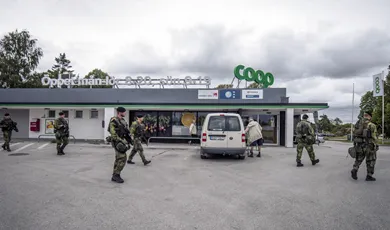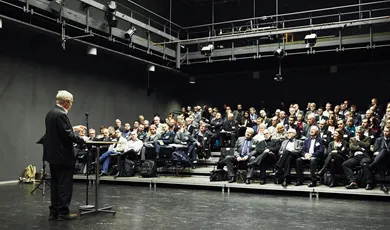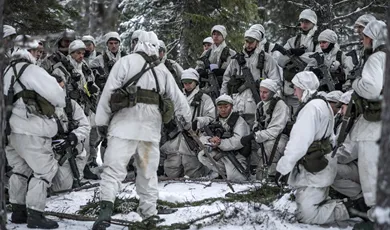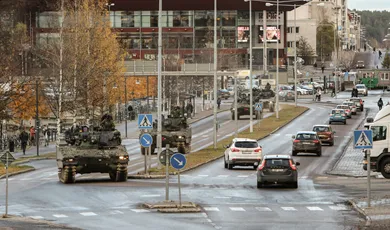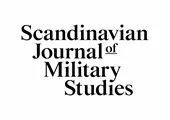This book examines hybrid threats within the broader context of a security crisis in Europe. As geopolitical tensions increase and great power rivalries intensify, can states protect their communities? While conventional wars are fought, parallel battles take place through more subtle and non-violent means. This multidisciplinary book examines how hybrid threats undermine political governance and social stability in liberal democracies, covering aggressors, targeted states, and victimized communities.
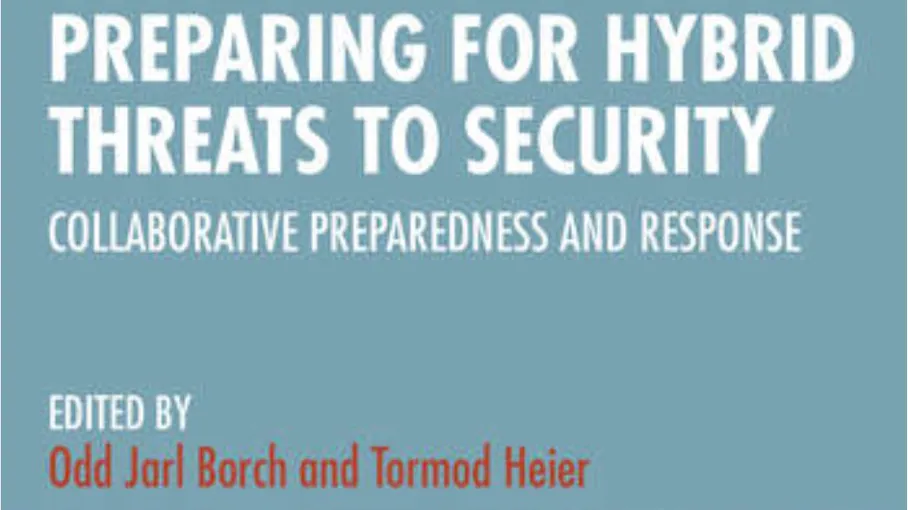
The book Preparing for Hybrid Threats to Security - Collaborative Preparedness and Response. Edited By Odd Jarl Borch, Tormod Heier is an open access publication and can be downloaded here: Taylor & Francois Group.
A paperback or hardcopy can be bought here: Routledge.
The book contains of seventeen chapters under the following five themes:
- The threat
- The Ukrainian experience
- Response strategies
- Knowledge and resilience
- Conclusions
Here is a short excerpt from the introduction of chapter 10 in the book.
HYBRID THREATS AND THE “NEW” TOTAL DEFENCE - The case of Sweden by Joakim Berndtsson
Introduction
To meet the challenges of complex, “non-traditional” threats and “transboundary” crises (e.g. Ansell et al., 2010; Boin, 2019), political leaders, national defence, and crisis management organisations are seeking ways to strengthen capabilities, preparedness, and resilience. While strategies vary, they often emphasise intergroup and interorganisational integration and collaboration across public-private, civilian-military, or national-international boundaries (see also Chapter 11 by Karlsson and Sandbakken). Concepts such as the “whole force” (UK), the “total force” (the United States), or the “defence team” (Canada) capture some aspects of this move towards collaborative and integrated defence arrangements (Goldenberg et al., 2019; Louth and Taylor, 2018; Berndtsson et al., 2023). In other contexts, notably in the Nordic and Baltic Sea regions, the perceived transformation and escalation of threats have seen a revival of national defence concepts such as “total defence” or, as in the case of Finland, “comprehensive security” (e.g. Valtonen and Branders, 2021, see also Chapter 13 by Kasearu, Truusa and Tooding).
The concept of total defence has been described as a “whole of society approach to national security intended to deter a potential enemy by raising the cost of aggression and lowering the chances of its success” (Wither, 2020, p. 62). In the past, total defence arrangements were primarily designed to meet the challenges of “total war”. Today, these and similar concepts are being re-invented and adapted to address threats and crises across multiple sectors and levels of society, and across the peace-war spectrum. In the process, governments, militaries, and crisis management organisations face the challenge of explaining the meaning and nature of hybrid or transboundary threats, as well as to organise robust and integrated whole-of-society and whole-of-government responses. This chapter focuses on the case of Sweden, and in particular the framing of emerging threats to mobilise support for, and participation in, the “new” total defence (see also Chapter 13 by Kasearu, Truusa and Tooding).
Swedish total defence can be traced back at least to the 1940s (Larsson, S., 2021; Angstrom and Ljungkvist, 2023). Thus, the concept is familiar terrain for many Swedes. What is currently emerging, however, is quite different; society has undergone substantial changes in the last decades, as have global and regional security landscapes. At the same time, definitions and interpretations of threats have changed, and concepts such as “hybrid threats” or “non-linear” warfare have gained considerable traction in political and military discourse. While the meanings of such concepts remain elusive (Rinelli and Duyvesteyn, 2018, pp. 19–23; Chapter 1 by Borch and Heier; Chapter 2 by Bjørge and Høiby), security policies in Sweden and elsewhere are characterised by “entangled” security logics (e.g. territorial and societal) that shape both understandings of, and responses to, perceived threats across the peace-war spectrum (e.g., Wrange, 2022). Broadening definitions of threats and security has meant increasing demands for capabilities and readiness but also a “securitization” of a growing number of issues (Larsson, O. 2021; Stiglund, 2021). Still, the fundamental idea of total defence remains; the concept requires active participation, planning, and preparation by nearly all parts of society—from the armed forces and crisis management institutions to municipalities, private businesses, and individuals. Thus, state actors face the dual challenge of explaining and communicating the nature and urgency of potential threats and the need for preparedness to an array of audiences, and to construct the “new” total defence as a credible response.
The aim of this chapter is to contribute to our understanding of how threat perceptions evolve and how they are mobilised to explain and legitimise decisions on defence organisation. To achieve this, the chapter asks: how have understandings of hybrid threats by key political actors in Sweden developed in the last decade, and how have they been communicated in the process to re-invent total defence? Through a constructivist lens, the analysis focuses on the framing (meaning making) of threats to national security by political actors, using ideas about hybrid threats and transboundary crises as a backdrop. Empirically, the analysis centres on the case of Sweden and, more specifically, on the framing of threats by political actors and in particular the Swedish Defence Commission (SDC). In the process, notions of societal and national security, service, duty, preparedness, and readiness—all central ideas for total defence—are bestowed with meaning. The ambition here is not to explain specific decisions, nor to investigate the level of political or popular support for specific policies, but rather to identify key shifts in the construction of meaning of threats and responses. Doing so will pave the way for a better understanding of ideas and issues that underpin the ongoingre-invention of total defence in Sweden and elsewhere.

Joakim Berndtsson
Joakim Berndtsson, PhD, is Associate Professor at the School of Global Studies, University of Gothenburg, Sweden.





